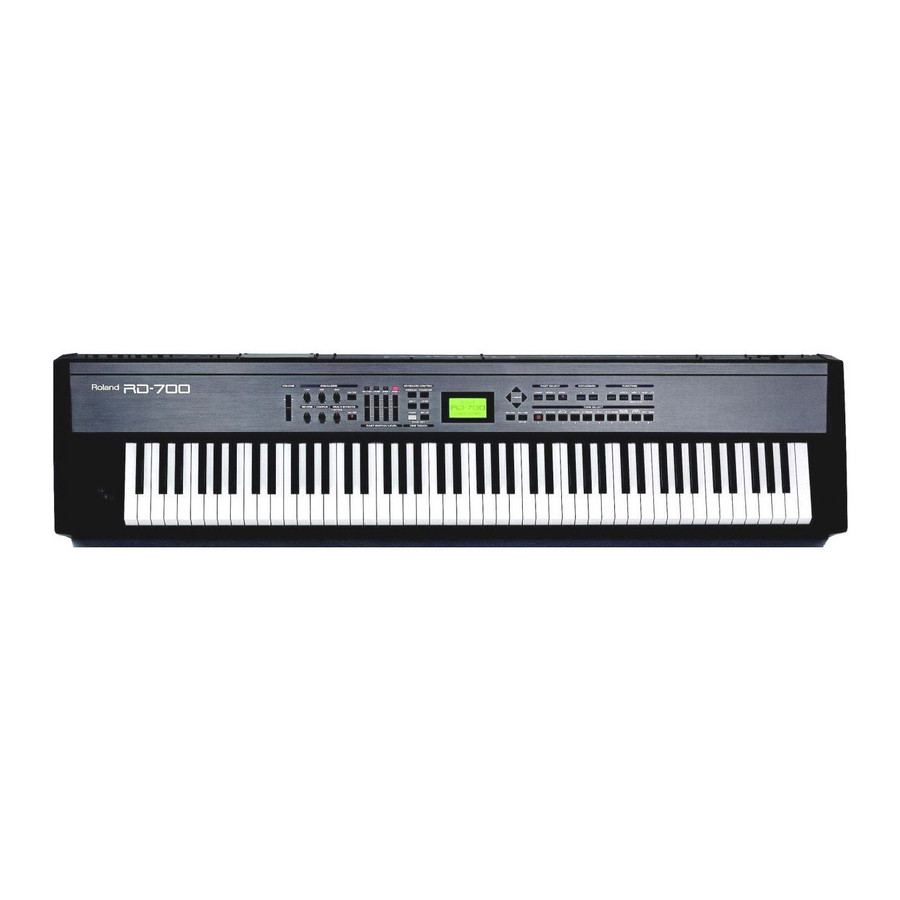
Roland RD-700 Digital Stage Piano Manuals
Manuals and User Guides for Roland RD-700 Digital Stage Piano. We have 2 Roland RD-700 Digital Stage Piano manuals available for free PDF download: Owner's Manual, Service Note
Roland RD-700 Owner's Manual (172 pages)
Roland Piano Owners Manual RD-700
Brand: Roland
|
Category: Musical Instrument
|
Size: 6 MB
Table of Contents
Advertisement
Roland RD-700 Service Note (34 pages)
Brand: Roland
|
Category: Musical Instrument
|
Size: 3 MB

